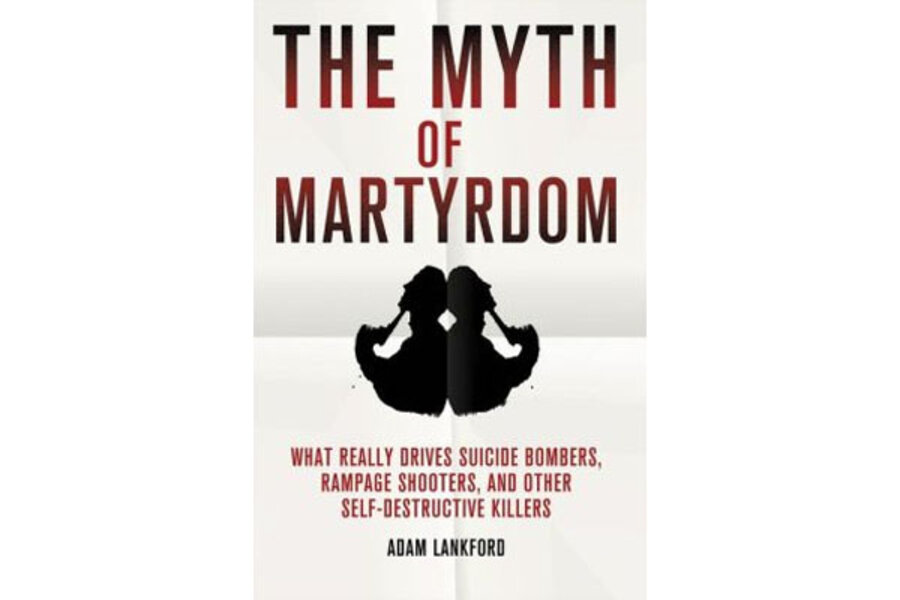The Myth of Martyrdom
Loading...
A week after the Sept. 11, 2001, terrorist attacks, comedian and political commentator Bill Maher said Mohammed Atta and his fellow conspirators were not cowards for their actions.
“We have been the cowards, lobbing cruise missiles from 2,000 miles away. That’s cowardly. Staying in the airplane when it hits the building, say what you want about it, it’s not cowardly,” Mr. Maher said on his show “Politically Incorrect,” then on ABC.
It was a highly sensitive time, and the comments were seen as anti-American by many; Maher’s show was suspended and subsequently canceled by ABC.
Though he does not address the incident with Maher in his new book, The Myth of Martyrdom: What Really Drives Suicide Bombers, Rampage Shooters, and Other Self-Destructive Killers, Adam Lankford would assuredly disagree with Maher’s contention that Atta – or any suicide bomber – is somehow brave.
“[F]ar too many commentators have taken this a step too far, concluding that because suicide terrorists do what we are afraid to do, this makes them brave.... [S]uicide terrorists have a dirty little secret. They’re afraid too – but of life,” writes Lankford, an assistant professor of criminal justice at The University of Alabama and a former adviser to the US State Department’s Anti-Terrorism Assistance program.
Lankford examines the personal stories behind numerous suicide bombers, school shooters, rampage shooters, and workplace shooters. Atta is examined in his own chapter, and the Columbine shooters, Dylan Klebold and Eric Harris, are discussed at length.
“Stunningly, considering his importance, Atta has been fundamentally misunderstood for more than a decade...,” Lankford writes. “[The] psychological autopsy has revealed that Atta’s struggles with social isolation, depression, guilt and shame, and hopelessness were very similar to the struggles of those who commit conventional suicide and murder-suicide.”
With the exception of workplace shooters, who are not often suicidal themselves, Lankford says that the other three groups are typified by people who are “driven to suicide for the same reasons any civilian might be – anxiety, depression, marital problems, professional failure.”
Lankford argues that, because many of them fear the spiritual consequences of killing themselves outright, they mask their desire to die beneath a foggy veneer of heroic action.
“The desire to acquire fame and glory through killing, and then escape the consequence, is a critical similarity between certain suicide bombers, rampage shooters, and school shooters,” he says.
Lankford deftly compares the behavior of Atta – “the most infamous and influential suicide terrorist in human history” – with that of Harris and Klebold.
“[T]hree years before 9/11, Harris wrote that he and Klebold would like to ‘hijack a hell of a lot of bombs and crash a plane into NYC with us inside.’ It is no mere coincidence that Harris envisioned almost the exact same attack that Al Qaeda’s 19 hi-jackers eventually carried out. They were attracted to the similar attack methods because at some deeper level, they had far more in common than we’ve ever realized before.”
The last section of the book, in which Lankford describes measures that can be taken to curb suicide bombers, is a bit wobbly and less convincing.
But the psychological connections he makes between a terrorist the likes of Atta and alienated high school boys like the Columbine shooters – and his explanations as to why these connections matter – are clear and compelling.
“[Our leaders] need to stop claiming that suicide terrorists are the psychological equivalent of America’s Navy SEALs,” Lankford writes. “They glorify suicide terrorism and help the cult of martyrdom grow.”
Cameron Martin is a Monitor contributor.








